Atmel SMART SAM4C32智能电网解决方案
Atmel公司的SMART SAM4C32 MCU是用于智能电网的系统级芯(SoC),具有两个高性能32位ARM® Cortex®-M4 RISC处理器,工作频率120MHz,高达2MB嵌入闪存,304KB SRAM和用于每个内核的高速缓存.器件集成了先进的加密引擎,防窃电,浮点单元(FPU),USB全速主/器件端口,5个USART,2个UART,2个TWI,多达7个SPI和PWM定时器,2个3路通用16位定时器.本文介绍了SAM4C32主要特性, SAM4C16/8 100引脚框图, SAM4C32 100和144引脚框图,以及SAM4C32评估板SAM4C32-EK主要特性和指标,架构图,电路图,PCB设计文件图和PCB元件布局图.
The Atmel® SMART SAM4C microcontrollers are system-on-chip solutions for smart energy applications, built around two high-performance 32-bit ARM® Cortex®-M4 RISC processors.
These devices operate at a maximum speed of 120 MHz and feature up to 2 Mbytes of embedded Flash, up to 304 Kbytes of SRAM and on-chip cache for each core.
The dual ARM Cortex-M4 architecture allows for integration of an application layer, communications layers and security functions in a single device, with the ability to extend program and data memory via a 16-bit external bus interface.
The peripheral set includes advanced cryptographic engine, anti-tamper, floating point unit (FPU), USB Full-speed Host/Device port, five USARTs, two UARTs, two TWIs, up to seven SPIs, as well as a PWM timer, two 3-channel general-purpose 16-bit timers, calibrated low-power RTC running on the backup domain down to 0.5 μA, and a 50 × 6 segmented LCD controller.
The SAM4C series is a scalable platform providing, alongside Atmel’s industry leading SAM4 standard microcontrollers, unprecedented cost structure, performance and flexibility to smart meter designers worldwide.
SAM4C32主要特性:
Application/Master Core
̶ ARM Cortex-M4 running at up to 120 MHz
̶ Memory Protection Unit (MPU)
̶ DSP Instruction
̶ Thumb®-2 instruction set
̶ Instruction and Data Cache Controller with 2 Kbytes Cache Memory
̶ Memories
Up to 2 Mbytes of Embedded Flash for Program Code (I-Code bus) and Program Data (D-Code bus) with Built-in ECC (2-bit error detection and 1-bit correction per 128 bits)
Up to 256 Kbytes of Embedded SRAM (SRAM0) for Program Data (System bus)
8 Kbytes of ROM with embedded bootloader routines (UART) and In-Application Programming (IAP) routines
Coprocessor (provides ability to separate application, communication or metrology functions)
̶ ARM Cortex-M4F running at up to 120 MHz
̶ IEEE® 754 Compliant, Single-precision Floating-Point Unit (FPU)
̶ DSP Instruction
̶ Thumb-2 instruction set
̶ Instruction and Data Cache Controller with 2 Kbytes of Cache Memory
̶ Memories
Up to 32 Kbytes of Embedded SRAM (SRAM1) for Program Code (I-Code bus) and Program Data (D-Code bus and System bus)
Up to 16 Kbytes of Embedded SRAM (SRAM2) for Program Data (System bus)
Symmetrical/Asynchronous Dual Core Architecture
̶ Interrupt-based Interprocessor Communication
̶ Asynchronous Clocking
̶ One Interrupt Controller (NVIC) for each core
̶ Each Peripheral IRQ routed to each NVIC Input
Cryptography
̶ High-performance AES 128 to 256 with various modes (GCM, CBC, ECB, CFB, BC-MAC,CTR)
̶ TRNG (up to 38 Mbit/s stream, with tested Diehard and FIPS)
̶ Public Key Crypto accelerator and associated ROM library for RSA, ECC, DSA, ECDSA
̶ Integrity Check Module (ICM) based on Secure Hash Algorithm (SHA1, SHA224, SHA256),DMA-assisted
Safety
̶ Up to four physical Anti-tamper Detection I/Os with Time Stamping and Immediate Clear of General Backup Registers
̶ Security Bit for Device Protection from JTAG Accesses
Shared System Controller
̶ Power Supply
Embedded core and LCD voltage regulator for single-supply operation
Power-on-Reset (POR), Brownout Detector (BOD) and Dual Watchdog for safe operation
Ultra-low-power Backup mode (< 0.5 μA Typical @ 25°C)
̶ Clock
Optional 3 to 20 MHz quartz or ceramic resonator oscillators with clock failure detection
Ultra-low-power 32.768 kHz crystal oscillator for RTC with frequency monitoring
High-precision 4/8/12 MHz factory-trimmed internal RC oscillator with on-the-fly trimming capability
One high-frequency PLL up to 240 MHz, one 8 MHz PLL with internal 32 kHz input, as source for high-frequency PLL
Low-power slow clock internal RC oscillator as permanent clock
̶ Ultra-low-power RTC with Gregorian and Persian Calendar, Waveform Generation in Low-power modes and Clock Calibration Circuitry for 32.768 kHz Crystal Frequency Compensation Circuitry
̶ Up to 23 Peripheral DMA (PDC) Channels
Shared Peripherals
̶ One Segmented LCD Controller
Display capacity of 50 segments and 6 common terminals
Software-selectable LCD output voltage (Contrast)
Low current consumption in Low-power mode
Can be used in Backup mode
̶ Up to five USARTs with ISO7816, IrDA®, RS-485, SPI and Manchester Mode
̶ Two 2-wire UARTs with one UART (UART1) supporting optical transceiver providing an electrically isolated serial communication with hand-held equipment, such as calibrators, compliant with ANSIC12.18 or IEC62056-21 norms
̶ Full-speed USB Host and Device Port (available only for SAM4C32E in a 144-pin package)
̶ Two 400 kHz Master/Slave and Multi-Master Two-wire Interfaces (I2C compatible)
̶ Up to seven Serial Peripheral Interfaces (SPI)
̶ Two 3-channel 16-bit Timer/Counters with Capture, Waveform, Compare and PWM modes
̶ Quadrature Decoder Logic and 2-bit Gray Up/Down Counter for Stepper Motor
̶ 4-channel 16-bit Pulse Width Modulator
̶ 32-bit Real-time Timer
Analog Conversion Block
̶ 8-channel, 500 kS/s, Low-power 10-bit SAR ADC with Digital Averager providing 12-bit Resolution at 30 kS/s
̶ Software-controlled On-chip Reference ranging from 1.6V to 3.4V
̶ Temperature Sensor and Backup Battery Voltage Measurement Channel
Debug
̶ Star Topology AHB-AP Debug Access Port Implementation with Common SW-DP / SWJ-DP Providing
Higher Performance than Daisy-chain Topology
̶ Debug Synchronization between both Cores (cross triggering to/from each core for Halt and Run Mode)
I/O
̶ Up to 106 I/O lines with External Interrupt Capability (edge or level sensitivity), Schmitt Trigger,Internal Pull-up/pull-down, Debouncing, Glitch Filtering and On-die Series Resistor Termination
Packages
̶ 100-lead LQFP, 14 x 14 mm, pitch 0.5 mm
̶ 144-lead LQFP, 20 x 20 mm, pitch 0.5 mm (SAM4C32E only)
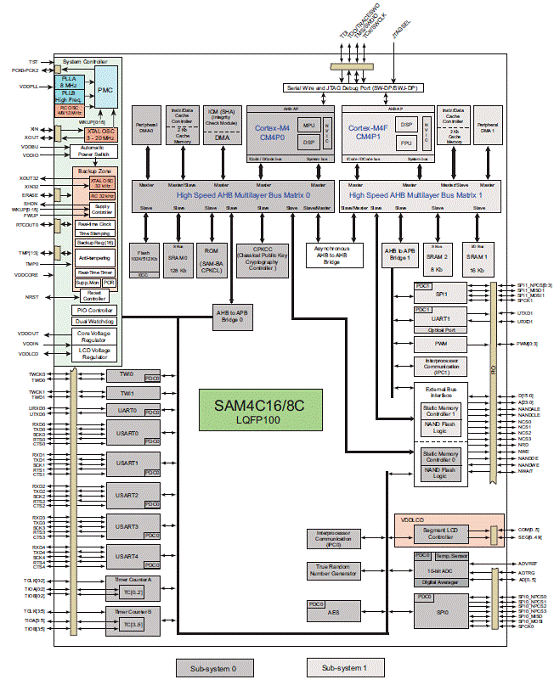
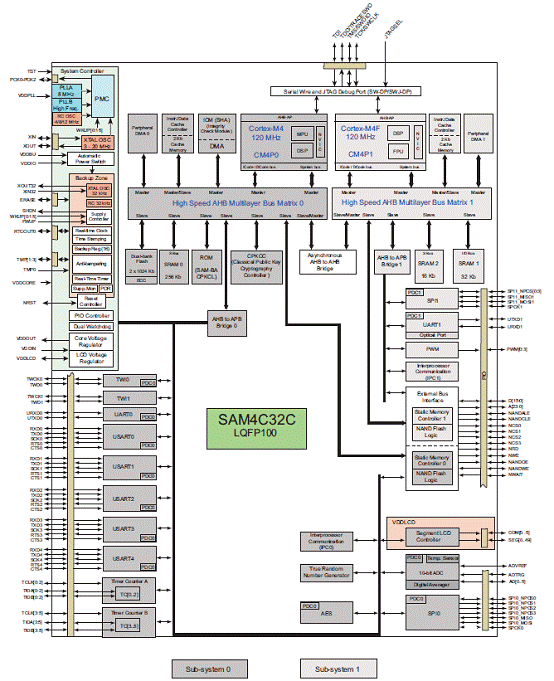
图2. SAM4C32 100引脚框图

图3. SAM4C32 144引脚框图
SAM4C32评估板SAM4C32-EK
The SAM4C32 Evaluation Kit (SAM4C32-EK) enables evaluation capabilities and code development of applications running on the 32-bit ARM® Cortex®-M4 SAM4C series microcontrollers from Atmel® Corporation.
The SAM4C32-EK can be used with the following microcontrollers:
SAM4C32C
SAM4C16C
SAM4C8C
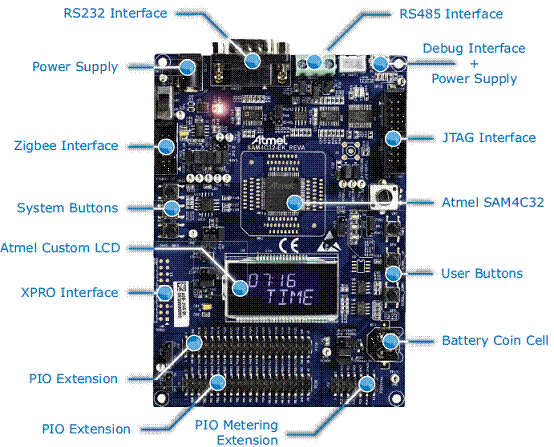
图4. 评估板SAM4C32-EK外形图
评估板SAM4C32-EK包括:
SAM4C32-EK Board
Power Supply
̶ Universal input AC/DC power supply with US, Europe and UK plug adapters
̶ 3V Lithium Battery type CR1225
Cables
̶ Serial RS232 cable
̶ Micro A/B-type USB cable
Welcome letter
评估板SAM4C32-EK指标: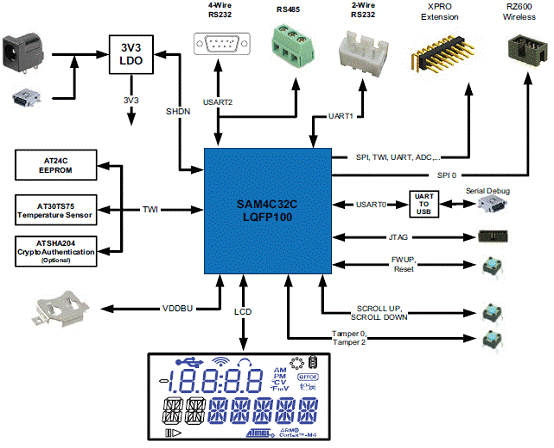
图5. 评估板SAM4C32-EK架构图
图7. 评估板SAM4C32-EK电路图(2)
图9. 评估板SAM4C32-EK电路图(4)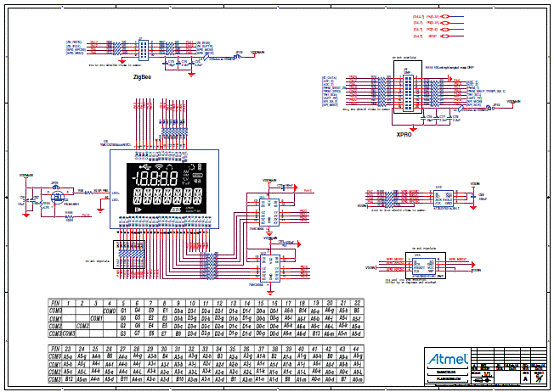
图11. 评估板SAM4C32-EK电路图(6)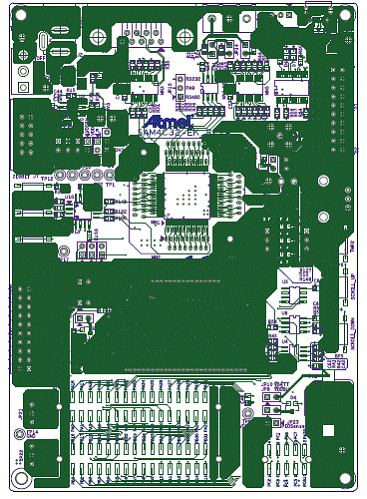
图13. 评估板SAM4C32-EK PCB布局图:顶层
图15. 评估板SAM4C32-EK PCB布局图:中间信号1层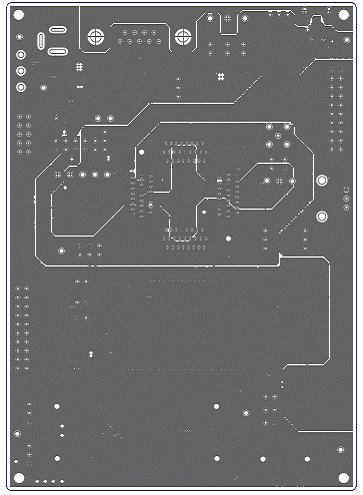
图17. 评估板SAM4C32-EK PCB布局图:电源层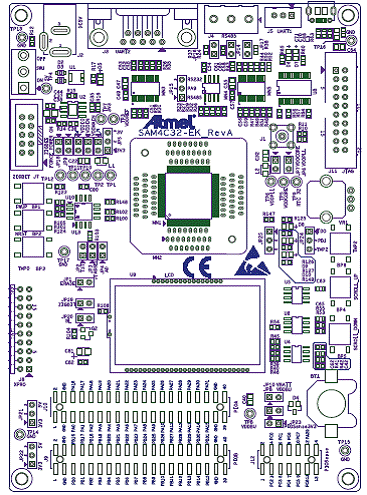
图19. 评估板SAM4C32-EK PCB元件布局图:顶层



评论